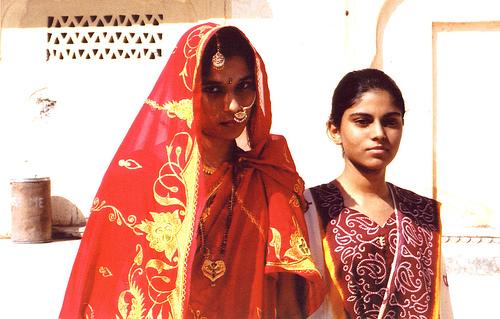Some Countries Are
 Susan notes: an excerpt from an interesting New
York Times article to mark International Women's Day 2010...
Susan notes: an excerpt from an interesting New
York Times article to mark International Women's Day 2010...International Women’s Day seems like an appropriate occasion to ask which countries do best by women — and why.
Obviously, the answer depends on how you define “best” — in absolute terms, relative to men, or some combination of the two?
You can choose from at least four different published rankings that consider some aspect of gender inequality that include the United States. None of them places us among the top 10.
I wish I could say which ranking I consider best, but they all have serious limitations. One consistent finding, however, is that public policies have a significant impact on gender equality, regardless of the level of overall economic development.
In 1995, the United Nations Human Development report introduced two measures designed to facilitate cross-country comparisons of the status of women. One, the Gender-Related Development Index (G.D.I.) takes as its starting point a Human Development Index based on life expectancy at birth, enrollment in schools, adult literacy and per capita gross domestic product.
The G.D.I. takes both absolute and relative levels of these factors into account, penalizing countries with a high disparity between men’s and women’s achievements. In 2007, the latest year for which data are currently available, the United States ranked 13th on the Human Development Index and 19th on the Gender-Related Development Index. Norway took first place on the H.D.I., but only second on the G.D.I. (Australia took the gold in G.D.I. rankings.)
A second United Nations measure, the Gender Empowerment Measure (G.E.M.), focuses more narrowly on relative levels of political participation and decision-making power, economic participation and earnings. The economic component, however, is influenced by absolute levels of income. As a result, low-income countries rank low. Sweden took top prize in 2007, with the United States in 18th place.
The organization Social Watch publishes a Gender Equity Index (G.E.I.) that combines elements similar to both the G.D.I. and the G.E.M., but relies entirely on relative measures, using a score of 100 to indicate perfect equality. This measure puts some less-developed countries (such as Rwanda) in the top category along with Scandinavian countries, with a score over 80; the United States has a score below 65.
The World Economic Forum published a Gender Gap Index (G.G.I.) in 2007 that combines quantitative measures with some qualitative measures based on a survey of 9,000 business leaders in 104 countries. They put the United States in 31st place.
Related Links:
More About The UN on AWR